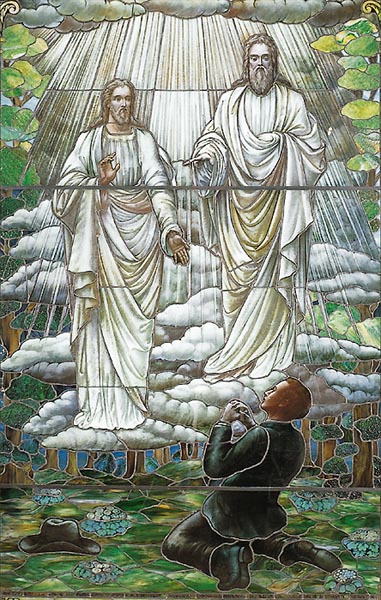 |
| Mormonism |
The Church of Jesus Christ of Latter-day Saints was established in 1830, shortly after The Book of Mormon: Another Testament of Jesus Christ was published. The church was “restored” by the prophet Joseph Smith. At 14, Joseph, born in Vermont but living in Palmyra, New York, claimed to have had a vision, in which God informed him of his mission to restore the true religion.
At 17, Joseph reported that an angel named Moroni directed him to a hidden manuscript preserved on golden plates and written in an unknown language. Smith’s translation narrates the story of how Middle Eastern exiles, associated with the so-called Ten Lost Tribes of Israel
Before their deaths, they buried this narration in 384 c.e., to be recovered in a “latter day” when their spiritual descendants would restore the true faith. Smith’s community, identifying itself as the restoration of this ancient faith (authentic Christianity), was forced by harassment to leave New York and move first to Kirtland, Ohio (1832), and then to Independence, Missouri (1838).
  |
They eventually settled in Illinois on the Mississippi and built the city of Nauvoo, which would become in the early 1840s the largest city in the state. Smith, who began taking many other wives in addition to his first wife Emma Hale, advanced the general practice of polygamy as an ordinance of the church.
Despite his enormous popularity and prosperity, such that he was able to mount a viable candidacy for the U.S. presidency, Smith’s practice of polygamy led disillusioned ex-members to establish a newspaper designed to expose him as a fraud and suppress his political ambitions. Eventually, a riot led to the burning of the newspaper office, and Joseph and his brother, Hyrum, were arrested. While detained in a Carthage jail, a lynch mob murdered both men.
After Smith’s death, the church split. The largest group, following their new leader Brigham Young
The Book of Mormon
The doctrines of progressive revelation (in which leaders are divinely inspired with teachings for a developing community) and progressive spirituality (in which believers are destined to become divine beings) form the framework of Mormon theology.
However, the most contentious point with critics is the secrecy of Mormon Temple practices